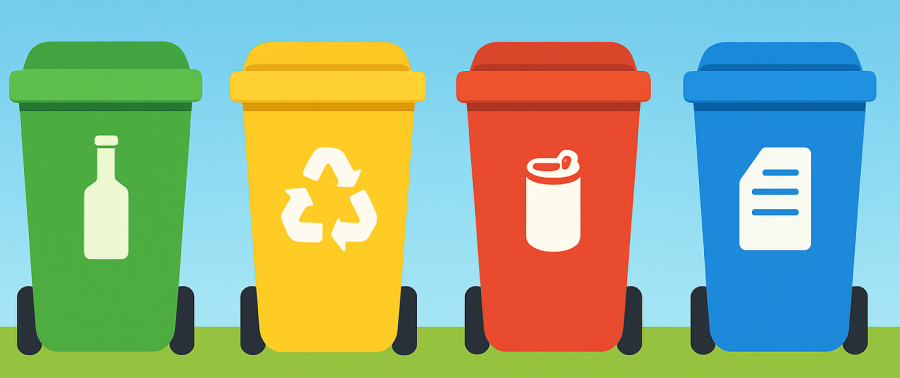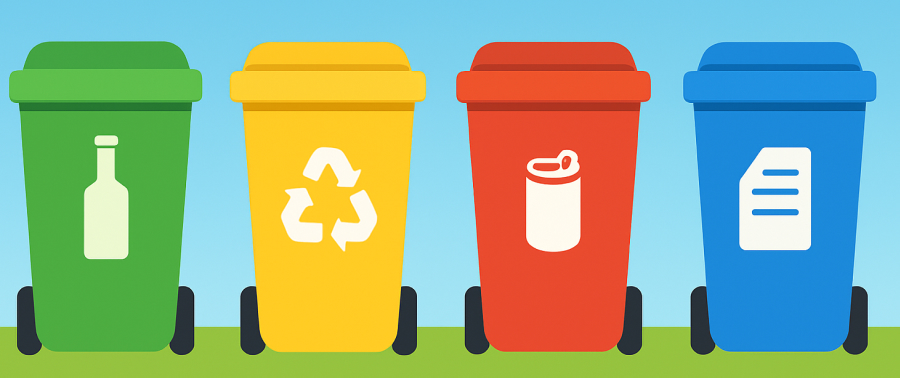

Bukovel is gearing up to launch the pilot program "Bukovel Sorts" as part of its commitment to sustainable development.
We are debunking the myth that all waste ends up in one landfill. For us, implementing circular waste sorting – with a focus on recycling – is crucial for a cleaner future.
Our partner in this effort is "Alpha Recycling," a company specializing in recycling plastic, glass, and paper.
However, Bukovel needs your help to ensure that the reform works effectively. We’ve created this guide to raise awareness – share it on social media, and send it to friends and family!
We believe that circular waste sorting will eventually be implemented across Ukraine, and Bukovel is proud to take one of the first important steps toward this goal.
Here's what you need to know:
PAPER
- Paper should be sorted into containers marked with blue.
Recyclable paper waste includes:
- Cardboard packaging, boxes;
- Paper (office, glossy, colored);
- Paper bags, paper containers;
- Tetra Pak / Pure Pak – cartons for milk, juice;
- Printed materials like newspapers, catalogs, magazines, advertising flyers;
- Cardboard cores from rolls;
- Notebooks and exercise books;
- Envelopes, postcards, and soft-cover books.
How to prepare paper for recycling?
- Remove any food remnants – the paper must be clean, dry, and free from grease;
- Flatten paper to save space;
- Remove tape, staples, paper clips, files, and binders if present.
Non-recyclable paper includes:
- Napkins, towels, toilet paper;
- Parchment (if dirty, greasy, or contaminated with food);
- Ecolin (wrapping from butter, cheese, etc.);
- Self-adhesive paper;
- Diapers and wet wipes;
- Laminated paper;
- Transport tickets;
- Paper plates and cups.
GLASS
- Glass should be sorted into containers marked with green.
Recyclable glass waste includes:
- Glass bottles;
- Glass containers;
- Broken glass;
- Containers from perfumes and medicines.
How to prepare glass for recycling?
- Wash and dry any contaminated glass items;
- Caps should be sorted with metal or plastic depending on the material;
- Labels can remain on bottles as they are separated during the recycling process.
Non-recyclable glass includes:
- Ceramics;
- Crystal;
- Heat-resistant glass;
- Mirrors;
- Light bulbs.
PLASTIC
- Plastic should be sorted into containers marked with yellow.
Plastic sorting is done according to the recycling symbol, which is typically located at the bottom of the product or on the label.
Recyclable plastic waste includes:
- PET bottles (01) – containers for water, soft drinks, oils, dairy products, cosmetics;
- HDPE plastic (02) – bottles for food (milk, juices) and non-food liquids (cleaning products, shampoos, soaps);
- LDPE plastic (04) – polyethylene bags, garbage bags, shopping bags, toys, zip bags, stretch film, bendable containers;
- PP plastic (05) – food containers, cups, bottle caps, yogurt cups, syrup bottles;
- PS plastic (06) – foam products like disposable dishes, cups, and utensils.
How to prepare plastic for recycling?
- Wash the items;
- Flatten plastic where possible;
- Place it in the correct recycling bin;
- Caps should be sorted separately.
Non-recyclable plastics include:
- Plastics with markings 03, 06 (styrene-based products), 07, and unmarked plastics;
- Blister packs;
- Disposable plastic cutlery and plates;
- Plastic office supplies (folders, files, pens, markers, tape);
- Personal hygiene items (cotton swabs, cosmetics, pill packs, razors, diapers);
- CDs and DVDs.